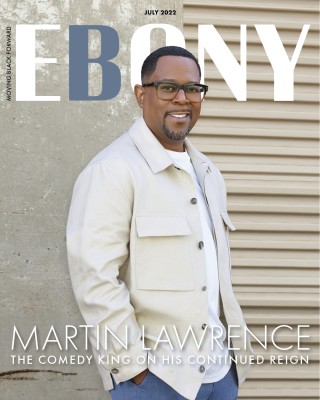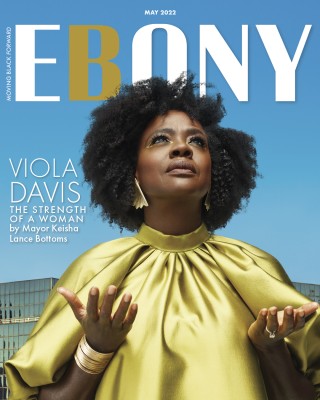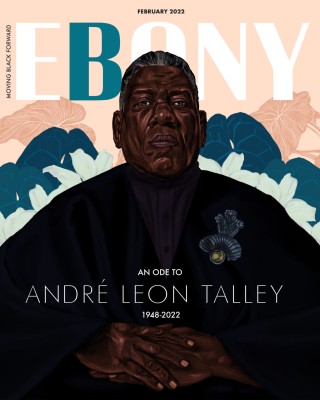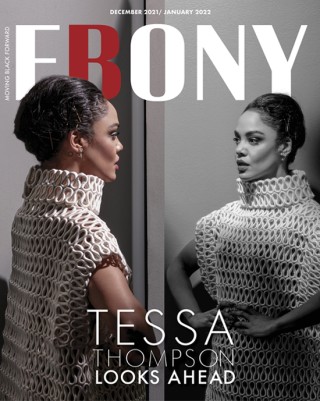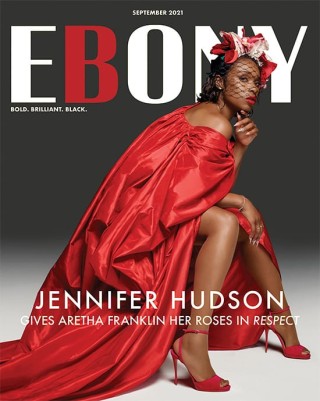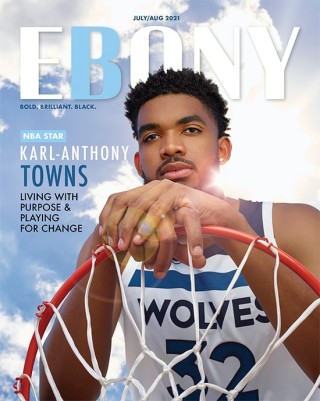LaKeith Stanfield: Moment of Truth
Written by Katie Bain on January 20, 2024

You might not recall the first instance of LaKeith Stanfield entering your consciousness over the last decade or so. Nevertheless, for however long he’s captivated your attention, it’s impossible not to be entranced by his esoteric nature. He evokes a cool sense of familiarity that feels as if you might’ve already met him in real life. You likely haven’t; he just seems to leave that impression on those who view his work from afar. But once it clicks, the realization of “Ohhh, yeah, that’s ‘him‘” allows you to be enraptured by what is sure to be a spellbinding performance only he could convey.
It’s also safe to say that Stanfield is undoubtedly a man of many faces. This is relayed not simply through his contrasting roles over his career thus far, but through his online persona and our virtual sit-down conversation.
Over an early morning midweek Zoom call, it is clear that his energy is spent. The night before, he popped out in Atlanta for a screening event for The Book of Clarence, his latest cinematic undertaking. As part of the job, he is showing up even through exhaustion. However, for the duration of the 54-minute interaction, Stanfield transforms and reveals more of his core: his personality, his beliefs, his optimism in humanity.
Sitting cross-legged on the floor, an ease comes over the dialogue. It feels as if we’re two old colleagues trading the most intellectual of gems in a literary salon operating under a Socratic seminar method. While he answers each query with brevity, what is most refreshing is how the responses piece together a larger story about where Stanfield comes from and decidedly where he is going. Additionally, he wants to bring us—our people—along for the journey, too. This finds its footing in all the small details: from the narrative his tattoos collectively weave and the musical vibes that spark his creativity to his goals as an actor.
“I want to be involved with things that push the needle a little bit forward…”
LaKeith Stanfield
Stanfield sheds his skin and becomes anew with every creative endeavor he takes on, a rebirth of sorts. A reimagined Renaissance man, Stanfield possesses an array of talents and passions that demonstrate in real time how his brain and originality tag-team in lockstep. No matter what you think about him, he’s in a category all his own—he likes it that way.
Under the shroud of (almost mischievous) mystery surrounding his persona, Stanfield is a deep thinker who takes time and intention before responding to the questions. It’s almost surreal to be in such proximity to an actor who has, in such a short time, stepped into exceptionally memorable characters across television and film.

Bursting onto TV sets on FX’s hit show Atlanta, he wholeheartedly personified the archetype of fan-favorite character Darius, an around-the-way dude with a mind of his own. While the show ended in its fourth season in 2022, Stanfield solidified himself as a rising sensation not to be overlooked as he racked up a fire mélange of leading parts: Cassius Green in Boots Riley’s Sorry To Bother You; the biographical portrayal of Bill O’Neal in Shaka King’s Judas and the Black Messiah; lover boy journalist in Stella Meghie’s The Photograph and the unforgettable (and extremely meme-able) Andre Logan King in Jordan Peele’s Get Out. After watching any sequence of the work he’s done, what can be identified most vividly is how he brings his intrinsic authenticity to the role but leaves a piece of himself behind to ponder where the acting begins and ends.
Stanfield is no stranger to the layers required to take on lionhearted characters that represent the everyday man. While his EBONY cover shoot was shot before the SAG-AFTRA strike, what is most profound is the level of introspection and full-circle elements last year brought with it.
What does humanity truly mean in 2024? How do we show up for our fellow man and person in everyday life? What myths about societal purpose, collaboration and unity are we still perpetuating? And most importantly, how do we get on track to evade the “business as usual” machine?
“I express myself through acting, through music, through my skin; you can see my beliefs are right on me.”
Heroes come in a multitude of forms. Whether fabled or nonfictional, the world needs them. Some wear bold capes and others stand up for injustice wherever it is seen. Others refuse to cross picket lines and dare to fight for their worth and equal pay. These champions make our world a bit more manageable by injecting a bit of faith into the mix. However, these figures come with a bevy of complexities which make them even more interesting to portray. These qualities and the endless possibility of how they can be enhanced is what attracts Stanfield to a project like The Book of Clarence.
Biblical epics are best classified by one’s ability to overcome an insuperable physical challenge like war or to defeat over a magnanimous villain. Director Jeymes Samuel gives a Cecil DeMille- (a.k.a. the Godfather of the Biblical Epic movie) level production in crafting the film, where it’s clear that the greatest challenge comes from the battle for truth within knowledge. The beauty of the film, coupled with the all-star cast performance, is that while it extracts homage from the genre’s past, it offers an alternative landscape in which melanated peoples are at the forefront and have a fullness of experience concurrently in the ancient era. Without giving the goods away, The Book of Clarence pulsates on how community, once built, can rally behind concern for their neighbor and bear witness to the wonder and power of connectivity. The film is a love story. It strikingly illustrates the magnitude that love—whether romantic, platonic or communal—can have on a series of events. This motif is of substantial value to Stanfield. It manifests outwardly in how he moves through artistic mediums such as music, which he plans to do more of under the performance moniker Htiekal, and being a “human hanger” in sundry fashion exploits.
In conversation with EBONY, Stanfield shares a great deal of his insight into the aforementioned, along with his journey into the titular role in The Book of Clarence and his ever-evolving trajectory as a multifaceted creative being.
EBONY: You’ve had such a dope trajectory over the past 12 years. Are there any roles you’ve played that created a foundational understanding for The Book of Clarence?
LaKeith Stanfield: I think Clarence stood singularly as the closest I’ve gotten to the kind of roles that I set out to do when I started acting. I wanted to do dynamic things that called for me to be challenged in my performance and I felt were meaningful. I wanted to do roles that spoke to my people and that engaged in conversation that would allow us to see ourselves in a fuller light.
It’s something I’ve always wanted to do—show romances with dark-skinned people on screen without toxicity. That’s why I did The Photograph and seeing us in action sequences and things. This movie embodied a lot of things I wanted to explore and share. I was happy to get this script and put my all into it. The fact that it came out as something I could be proud of surprised me because I typically hate something about the performance. I’m critical of myself, but with this one, I loved it. I had no notes, nothing but good things to say about it. I was immensely happy that I had been a part of something I could be proud of.
Biblical epics—such as The Ten Commandments and The Greatest Story Ever Told—are a timeless film approach that resonates across generations. What biblical epics were you familiar with before shooting The Book of Clarence? Did you dive head-first into research?
I watched little bits and pieces of things such as Passion of the Christ and Ben-Hur. I just wanted to get a sense of what had been captured in terms of how other people interpreted that time. But I didn’t want to dive too deep because I realized we were doing something different. I wanted to build the world we were creating from an organic place. I reserved a lot of that research for other things, things that I wanted to incorporate into the character-specific things and movements. This included how they carried themselves, whether or not they were a little bit more reserved, their posture and the way they looked. I like to put research into those things rather than the technical aspects because I figured that there have been a lot of renditions of biblical epics and stories, but those are all those interpretations. What we were doing here was something different, something special and something that actually wasn’t even rooted in religion, or Jesus, for that matter. It’s rooted in a guy named Clarence, who lives down the street from Jesus, around the corner. I wanted to be as organic as possible. You place people in that time. They’re just like us. So, I wanted to make sure that Clarence felt just like us.
“When reflecting on my life, things I learned that were important and things that left an impression on me, I put that into music.”
This is the second film where you’ve worked with Jeymes Samuel & JAY-Z. How did the opportunity present itself and how did the experience working on The Book of Clarence differ from The Harder They Fall?
We were on the set of The Harder They Fall, and Jeymes kept telling me about this project that he had in mind for me. It sounded nice, but I had no idea what it really was. I was interested to learn. After we finished wrapping, he sent me the script for The Book of Clarence. From the moment I saw the cover, I knew it was going to be crazy because there was a Black dude on a cross. I was like, “Oh, what is this about?” I hadn’t seen this imagery since my aunt’s house growing up, but she had a picture of a very dark-skinned Jesus. When I was younger, I looked at the White picture of Jesus and said, “Oh, there’s Jesus.” Then I looked at the Black one and said, “Who’s that?” Then I realized that it was Jesus. And I was like, “Oh, so there’s two Jesuses.” She’s like, “No, there’s one Jesus. But he comes in many forms.” I didn’t understand that until I got older; I started to realize it more. It had been that long since I was a child and I saw that imagery. Boom, there it was, on the front of the script. I knew it was going to be something special; I read the whole thing and was crying tears of joy that I finally found something that appealed to my sensibilities. Not only because it was a unique watching experience and felt like it would be a uniquely entertaining experience, but it was also both funny, romantic and action-packed and had sentimental, deep moments. Also, the backdrop was Black skin within a time and space we typically don’t see them in. Everybody’s Black; it’s a Black romance centered on us. I remember telling Jeymes that we have to make this a dark-skinned romance. I just wanted to see more of that and be a part of things that showed that, so I was like, “We’ve got to do that.” Jeymes was like, “Yeah, absolutely, we have to do that.” We had to create something that he called “biblical chocolate” on screen. It was just exciting from the very beginning. I knew I had to be a part of this.

LaKeith wears a Ferragamo suit and shoes, Gladys Tamez Millinery hat, Simon G jewelry and Audemars Piguet watch. Photo by Keith Major for EBONY.
At the film’s start, Clarence is motivated to prove he is not a nobody. He then goes on a journey through various phases of faith and ultimately becomes resolute in the “knowledge” of what his faith means and is cemented in. What do you have faith in? Do you believe a person could ever be a “nobody?”
I don’t think so. I don’t think that God makes mistakes in that way. I think we all have our own paths and environments that influence who we are and how we become our own. Those things have a lot of different influences on who we finally become. But I do think that little babies when they’re born, no matter where you come from, are an unending well of potential. I would look at my daughter’s eyes and just start crying at the beauty of the potential that there’s a cornucopia of things she could be. I felt, all at the same time, happy about the future and what it could hold and sad at the pain that you might have to experience in life. It’s knowing that the new generation always has the answers; they have the right information embedded into them.
When you look at a child, there’s no way you can think of any one of them as a nobody. I think the world and experiences that we have can turn us into dark places and do things. Sometimes, we make bad choices and decisions. Sometimes, we are not unpacking traumas and talking to people and getting the help that we need and the environment that we need to where we don’t have to survive and do terrible things. There are even some genetic predispositions for certain things. I’m sure there’s a whole plethora of reasons why we end up not being the kind of person we want to be, but I don’t think that there’s any baby born on the planet that is born a nobody.
We are not too far removed from the success of the SAG-AFTRA strike. This movement exposed just how crucial it is for working-class individuals to be respected and their worth be properly honored as human beings. What did this time bring to the surface for you?
I think in any industry, you have to fight for what’s fair. When you’re dealing with big companies, things that have a lot of resources and benefit from the work of people, you must organize. In places where we can create spaces and be in control of our destiny, we can’t be pulled along on a string by these very powerful people, companies and entities that are looking to take advantage. We have to stand up, we have to say something, we have to let our voices be heard; it’s very important. Otherwise, you get taken advantage of. That’s what unions are for. I’d love to see more unions in the music industry and other industries—we need that, we need to be protected. It’s how we make our voices heard. Y’all don’t have a machine without the people driving the machine and that’s what every industry needs to realize. That’s what everybody needs to understand; it uses commerce, consumption and money. Y’all don’t have anything if y’all don’t have us. If we all stopped going to Gucci or whatever it is and we just decide today that we don’t want to buy that anymore, then it doesn’t mean “back to normal.” I think that’s what’s important for them to understand. You’ve got to treat us right. We don’t want monkeys on shirts, we don’t want crazy iconography, no racist stuff, we don’t want none of that!
We want to see ourselves being represented in a way that makes it otherwise; we hold our dollar, we hold ourselves, and you guys implode on yourself because you’re not doing the right thing. We have the power. And I think we have got to realize that we have the power in numbers, and we should. It’s our responsibility to speak about that or stand down when they’re doing what they’re not supposed to be doing. Because then they come knocking and they want to figure it out. “Oh, now you want to figure it out? Well, I’m glad that you asked. I’m going to need ‘this, this, this, this and this’ so we can engage in a partnership together and make something because we don’t do it without each other.” I need you; you need me. So, let’s sit down, talk, negotiate and come to an understanding. Because, at the end of the day, there is no way that people should be engaged in this kind of super-imbalanced slave labor and anything. So don’t let this actor strike exist as just an actor strike because it’s a worker strike. It’s a strike for proper compensation and wages, and not being used and abused in an age where technology is increasing very rapidly, AI’s going crazy and a whole bunch of other things are moving at an insane rate. We’ve got to make sure that we’re taking care of those spaces. Because when you’ve developed a model based on capitalizing and don’t care what’s going on—they’re all about the dollar. Sometimes people get run over in that pursuit. We all want to do great things, amazing big things. But you got to have some sense about you and some humanity about you in your approach. That’s all we ask.
What’s a myth or belief that you have that no matter what anyone says, you’ll stand ten toes down on it?
I’m pretty sure this is all just the matrix. But I keep those details to myself. I’m pretty sure this is a simulation. If you think about it, it’s giving simulation vibes. Have you played The Sims? With AI being what it is now, we are clearly existing in some sort of program. Something is controlling it and just going through the motions, and like, we’re telling us, our biological clock is hooked up to something. I don’t know, I call that thing God. But I don’t know, it’s looking a little like a simulation if you ask me.
That’s a very Darius-coded—your character from Atlanta— thing for you to say.
This is the reason why most people be thinking I’m Darius because a lot of Darius-type stuff comes from me. There were real discussions that were had that became incorporated into the character. It was such a collaborative, beautiful experience working on Atlanta. Shout out to that.
On your Instagram page, you often post snippets of lyrics and visuals that aid the music you are working on. As an artist working on your solo projects, how do you center your thoughts on what you’d like to say?
When on the road and traveling, I typically write whatever I’m feeling or going through. When reflecting on my life, I learned that there were important things that left an impression on me, and I put that into music. A lot of anger about things, confusion about things, things that I love a lot and things that I don’t love a lot—all of that goes into my music, sort of becoming a diary. I feel I can let it all out there in a way I can’t always do in roles or interviews. But in the music, I can let go and express myself differently. It is very cathartic and fun. I love doing it.
You’ve been known for shaking the table and making waves when it comes to how you present as an artist, fashion aficionado and overall creative. Regarding your aesthetic, how do you figure out what you feel most comfortable wearing, especially for your most provocative shoots?
I think about a shoot I did last year for Replica Man Magazine. It was a super cool group of creative people that I was working with. I enjoy trying new things. I prefer to do things that feel fun and liberating. For a while, I’ve had this shtick about my legs and I did not want to show them. But then I decided I’m going to do something bold and show them because who cares? These are my legs. They’re the only two I have; they move me around. They do what they’re supposed to do. And I love them. And I will show them. So, I did that in a photoshoot, and it felt so liberating. I want to continue to do things like that.
Taking chances and doing things that feel fun is essential. It’s a fun, beautiful blessing to be in a photoshoot and wear these cool clothes with these cool brands. Smart people put their minds into creating these cool patterns and things. Just being a human hanger is super fun. I’ve always wanted to be that. When I was little, I’d be putting on my aunt’s coat, putting on her wig and dancing in the air. She would say, “That boy’s crazy.” But it was just always who I was. I still feel that way. I still feel like that child who just wants to have fun. I try to have fun with it.

LaKeith wears a Ferragamo suit and shoes, Sarah Sokol Millinery hat, Simon G jewelry and Audemars Piguet watch. Photo by Keith Major for EBONY.
Without a doubt, you move to your own rhythm and set your own pace. As a Black man, how do you reject conformity when there is a subliminal societal standard to fit in at every turn?
I don’t know who told us that we’ve got to exist only one way and do everything one way; that’s not true. My brother, you don’t have to do that. We can explore; we can move about instead of staying in a box. I know how it is to be in an environment where you feel like you got to be one way and you got to give off one kind of energy. We’re not in prison right now, you feel. So, since we’re not in prison, let’s live like we are free. Let’s take these gifts that we have at our disposal and use them because we can use them and should use them. I think that’s important. Use when you can, and if that ain’t your expression, that’s cool. Because the more we express, the more we make room for others to do the same. And that’s what we should be doing, that’s what it started for. It’s about living how you live, and it’s about living in a way that you can feel proud of. So that way you may be able to do it loudly and proudly. And that’s what we want to carry with us. It ain’t about being in this box and feeling safe on the internet where you can hide behind an avatar. It’s about getting outside and embracing life. It’s short, so enjoy it and do it the way you need to do it.
How has fashion played a role in shaping your sense of self and identity?
I’m really expressive. I express myself through acting, through music, through my skin; you can see my beliefs are right on me. I usually start the conversation with peace because that’s what I believe in. I want that for everybody. My “High Times” tattoo isn’t about smoking weed; it’s about the high times in life. Life exists in crests and troughs. And when you’re in a high moment, you should appreciate it. Sometimes I have to remind myself to do that because I’m so in my head. I’ll be looking in a mirror and thinking, “Why are you smiling? Oh, yeah, it’s okay to have a good time, it’s okay to embrace the moment.” I have a physical reminder that it’s okay to do.
I also express myself in my clothes, what I wear and the multiplicity of the way that I show up. I think that I’m more than just one thing. I think that I’m a lot of things, and I feel a lot of things. Some days, I feel like a slob; I flop on the couch and I just want to lay down. Some days, I feel like I just want to go running and invigorate myself. Sometimes, I feel aggressive. Sometimes I feel peaceful. You feel all kinds of things going through life. Fashion is fun because you can pretty much go through everything that you feel in one look. You can have a hat that has fringes on it and hide behind the shade of it, which might appeal to some of your shy sensibility. But then you also have shorts that go super high and show your legs. If it’s an insecurity like mine, this can be a moment for you to be fearless on your behalf.

LaKeith Stanfield wears a Fear of God suit, Gladys Tamez Millinery hat, Simon G jewelry and Audemars Piguet watch and Givenchy shoes. Photo by Keith Major for EBONY.
You previously mentioned that while growing up, you experimented and had fun with your family members’ clothing. I’d love to hear more about how fashion has become an extension of yourself, particularly during the years you’ve been in the spotlight.
For instance, that photoshoot I referenced, that’s what it was about—those are shorts; people say it’s a dress or whatever, but it was shorts. The reason I chose those shorts came from me feeling like, “Man, I don’t know if I want to show my legs.” My boy who was on set at the time said to me, “Do what you feel, man, do what you feel,” So I put the shorts on. It was a moment of power. I didn’t know they were going to choose that photo because we took a lot, but I’m glad they did because it represents the very thing I was trying to feel—free yourself, free yourself from needing to cover your legs up, from needing to appear a certain way. Even though people took it in a whole other direction, that’s fine because a lot of people truly feel that way, who want to be seen, want to be heard, who want to just exist in the world as they are. And they look like me; they deserve to exist too, and everybody deserves to exist.
I’ve taken 35,000 photos in a suit and nobody ever said, “Oh, you’re super masculine in that suit; man, he really put it out there for the masculine men.” But the moment I crossed my legs and got my legs out there, now it’s “controversial.” To me, what it does is show more of people’s own internal bias and says nothing about me. The internet is a place where everybody wants to be heard, everyone has something to say. That’s fine. Live your truth, do what you do for the reasons you do it and don’t worry about what everybody else has to say about it. That’s for them to speculate about.

LaKeith wears a Luar blazer and glasses, Alexander McQueen top c/o Neiman Marcus, Givenchy trousers, On Aura Tout Vu tie, Simon G jewelry, Audemars Piguet watch and Christian Louboutin shoes. Photo by Keith Major for EBONY.
As you see it now, how does LaKeith Stanfield continue to evolve?
I want to be involved with things that push the needle a little bit forward so that, maybe, we might be able to excavate something meaningful from there. We’ve been blessed by our ancestors to be able to be here and be expressive; we should be expressive for them because we’re here right now—not everybody gets to be in that position. We should use it. That’s how you honor them and all the things they’ve been through.
Now, if you still want to live in a box and just live in this monotone space, that’s perfectly fine. But I feel my calling is to be expressive in my way. You do it in your way. And hopefully, what we find from that is more inspiration rather than division.
Savannah Taylor (@savmtaylor) is a writer, storyteller and multihyphenate creative who is in love with all things Black culture and community. She currently serves as an editor and Senior Interactive Producer at EBONY.
FORMER EDITOR-IN-CHIEF & SVP, PROGRAMMING: MARIELLE BOBO
FORMER CREATIVE DIRECTOR: RASHIDA MORGAN BROWN
PHOTOGRAPHER: KEITH MAJOR
COVER STORY: SAVANNAH TAYLOR
COPY EDITOR: JONATHAN GILES
FORMER COPYEDITOR: GRAHAM BREITENSTIN
EXECUTIVE PRODUCER: TRACEY WOODS
ON-SET PRODUCER: SUZE LEE
VIDEO: MEGA MEDIA
STYLIST: JAN-MICHAEL QUAMMIE
STYLIST ASSISTANT: TOSHA HERZOG
TAILOR: MARC LITTLEJOHN
GROOMER: SIAN RICHARDS
DIRECTOR: GERRAD WILSON
DP / VIDEO PRODUCER: ERIC DAVIS
AUDIO: IZUMI ROSAS
LIGHTING TECH: COLIN JACOB
PHOTO ASSISTANTS: ZACK HUGHES, TROY UPPERMAN
DIGITAL TECH: KIM TRAN
RETOUCHER: ALBERTO MARO
RETOUCHER: WARREN MANTOOTH
PRODUCTION ASSISTANTS: APU GOMES
EBONY TEAM
CEO: EDEN BRIDGEMAN SKLENAR
EVP, BRAND & MARKETING: ASHLEE GLENN
FORMER EVP, DIGITAL: KENNETH GIBBS
LEGAL COUNSEL: LOREN PRIZANT
MARKETING DIRECTOR: KRISTEN LEE
TALENT DIRECTOR: ASHLE MITCHELL
FASHION & BEAUTY LEAD: VICTOR VAUGHNS
SENIOR INTERACTIVE PRODUCER: SAVANNAH TAYLOR
INTERACTIVE PRODUCER: DELAINA DIXON
SOCIAL MEDIA DIRECTOR: RACHEL JENKINS
SOCIAL PRODUCER: GITORY BARTELL
GRAPHIC DESIGNER: JOHN BRUTON
DIGITAL COORDINATOR: LERELL RICHARDS
BRAND & MARKETING COORDINATOR: JEANA EDNEY
The post LaKeith Stanfield: Moment of Truth appeared first on EBONY.

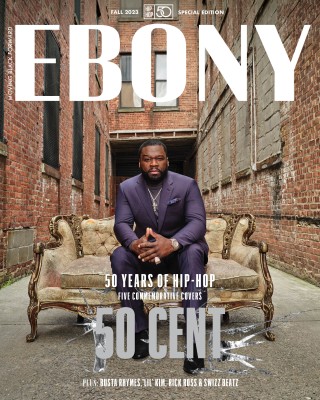
![The Chi Cover Final Cover[63]](https://www.ebony.com/wp-content/uploads/2023/07/19/The-Chi-Cover-Final-Cover63-320x426.jpg?t=1696274390)
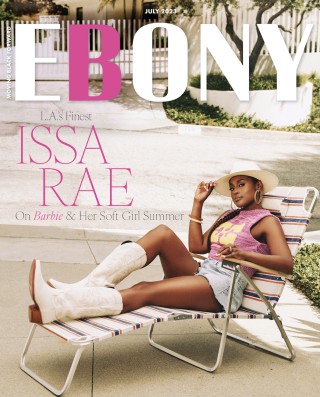

![Hailey Bailey Cover[1]](https://www.ebony.com/wp-content/uploads/2023/05/02/Hailey-Bailey-Cover1-320x426.jpg?t=1693598909)
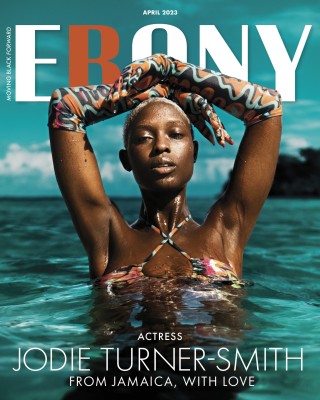
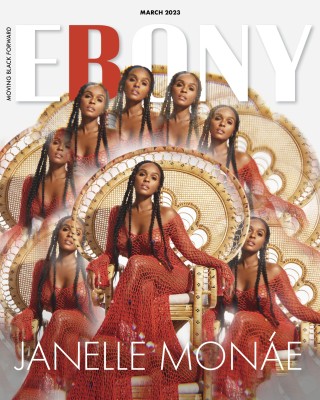
![Jonathan Majors Retouched Cover eye[1]](https://www.ebony.com/wp-content/uploads/2023/02/05/Jonathan-Majors-Retouched-Cover-eye1-320x426.jpg?t=1693765236)


![CIARA- 1st cover drop[1]](https://www.ebony.com/wp-content/uploads/2022/09/CIARA-1st-cover-drop1-320x426.jpg?t=1693401642)

